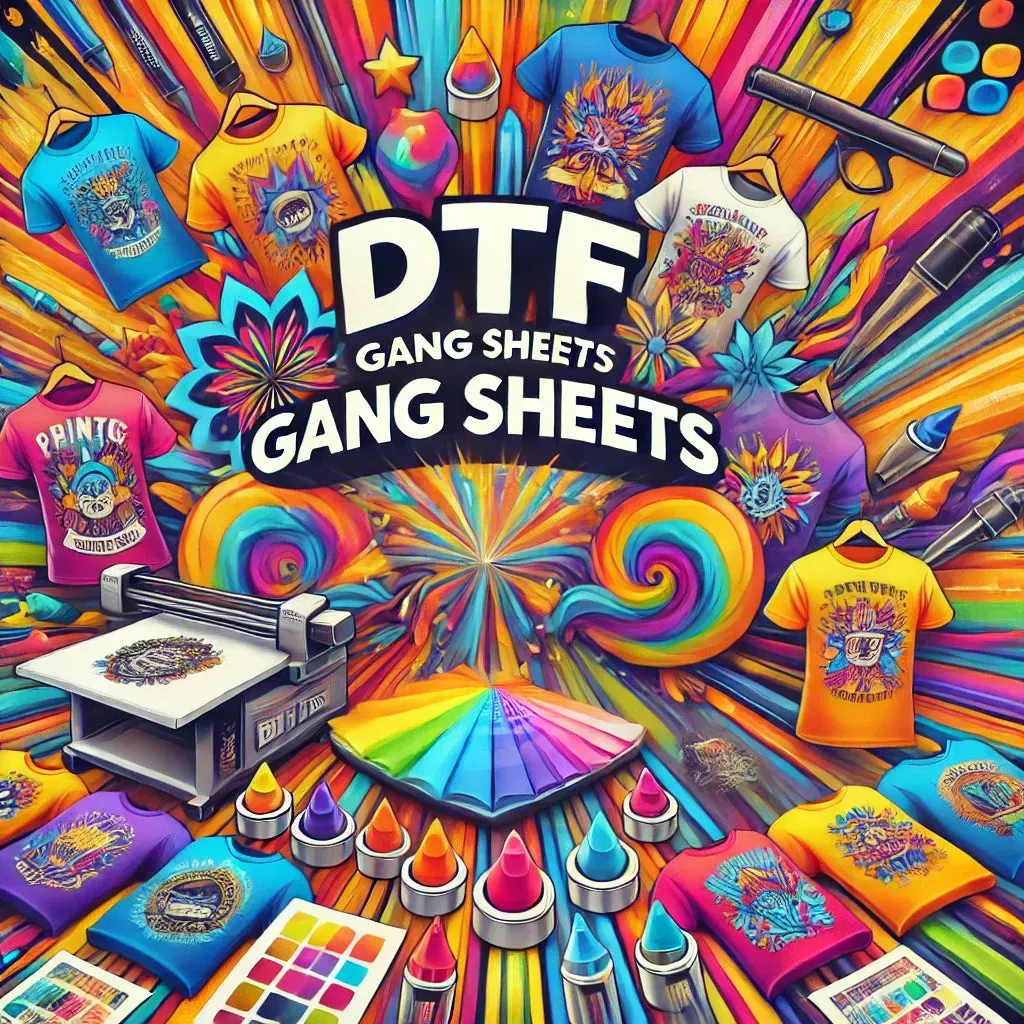DTF gangsheets are revolutionizing the custom apparel landscape by offering an efficient way to produce multiple designs in a single printing run. With direct-to-film (DTF) printing, businesses can create vibrant and high-quality prints that are easily transferred onto a variety of fabrics using heat transfer printing methods. This step-by-step approach to creating DTF gangsheets maximizes productivity while minimizing costs, allowing designers to showcase their creativity effectively. The DTF printing process involves specialized techniques, such as the application of hot melt powders, to ensure designs adhere firmly to garments. As a result, DTF gangsheets not only enhance the visual appeal of custom apparel but also streamline workflows for creatives and businesses alike.
In the world of direct-to-film printing, gangsheets serve as a vital tool for apparel customization. This method allows designers to print multiple images on a single film sheet, which can then be heat pressed onto various materials. By utilizing this effective strategy, users can optimize their production while maintaining outstanding print quality. The process, often referred to as DTF printing techniques, combines versatility and efficiency, making it a popular choice among garment decorators. Whether you are looking to create promotional items or unique fashion pieces, mastering the art of producing DTF gangsheets can significantly enhance your creative output and business potential.
Understanding the DTF Printing Process
Direct-to-Film (DTF) printing is revolutionizing the custom apparel industry, providing a unique method for transferring designs onto fabric with remarkable precision and clarity. In this process, high-resolution images are printed onto a special film, making it possible to transfer complex designs, including gradients and intricate details, seamlessly. This method is especially favored for its vibrant color reproduction and durability, outperforming traditional printing methods.
The DTF printing process begins with advanced digital printing technology that lays down water-based inks onto a film substrate. After the image is printed, a hot melt adhesive powder is applied, which melts during the heat transfer stage. This technique not only ensures that designs adhere flawlessly to various fabric types but also allows for the production of multiple designs on a single film sheet—effortlessly creating DTF gangsheets.
Frequently Asked Questions
What is a DTF gangsheets and how is it used in DTF printing?
A DTF gangsheets is a print method that involves creating multiple designs on a single sheet of Direct-to-Film (DTF) transfer film. This approach optimizes the DTF printing process, allows for cost-efficient production, and delivers high-quality heat transfers for custom apparel.
How do you create DTF gangsheets for custom apparel?
To create DTF gangsheets, use design software like Adobe Illustrator to arrange your artwork on a film sheet. Ensure designs are in CMYK mode, and make the most of the print area. Then, print onto DTF film, apply hot melt powder, and finally heat press onto desired fabrics for perfect transfers.
What are the benefits of using DTF gangsheets in custom apparel production?
DTF gangsheets offer numerous benefits including reduced costs by printing multiple designs at once, high-quality output with vibrant colors, and flexibility to incorporate various designs, making them ideal for custom orders or sampling.
What type of printer is required for DTF gangsheets printing?
A specialized DTF printer with water-based, high-opacity inks is required to produce high-quality DTF gangsheets. Proper printer settings are critical for ensuring accurate alignment and vivid ink transfer during the printing process.
Can you explain the heat transfer process for DTF gangsheets?
The heat transfer process for DTF gangsheets involves preheating a heat press to about 320°F (160°C), placing the printed film onto the fabric, pressing for 15-20 seconds, and allowing it to cool before peeling the film away to reveal a stunning transfer.
What are some best practices for creating effective DTF gangsheets?
Best practices for creating effective DTF gangsheets include using high-resolution images to prevent pixelation, organizing designs thoughtfully on the canvas, testing prints for quality assurance, and implementing eco-friendly practices to appeal to environmentally conscious consumers.
| Key Point | Description |
|---|---|
| What is DTF Gangsheets? | A printing technique that uses Direct-to-Film (DTF) printing to combine multiple designs on a single sheet. |
| Benefits | Cost-effective, high-quality output, and flexibility in designs. |
| Preparation | Use design software like Adobe Illustrator, ensuring designs are in CMYK and spaced appropriately for cutting. |
| Printing Process | Set up a DTF printer with high-opacity inks, print designs, and apply hot melt powder for adherence. |
| Heat Transfer | Heat press at 320°F for 15-20 seconds, cool down, and peel to reveal the design. |
| Post-Processing | Run a second heat press for better durability and color vibrancy after peeling and cleaning excess powder. |
| Best Practices | Use high-resolution images and organize designs for marketing potential. |
| Testing | Conduct test prints to correct color or adherence issues before full production. |
| Sustainability | Consider eco-friendly materials to appeal to conscious consumers and stand out in the market. |
Summary
DTF Gangsheets represent a powerful technique in the custom apparel industry, allowing you to create vibrant and high-quality designs efficiently. By mastering the steps involved in DTF printing—from preparation through to post-processing—you can significantly enhance your output while reducing costs. This comprehensive guide emphasizes not just the technical aspects but also best practices and sustainable considerations, making your printing process both effective and environmentally friendly. By implementing these methods, you can ensure your products stand out and meet customer expectations in today’s competitive marketplace.


